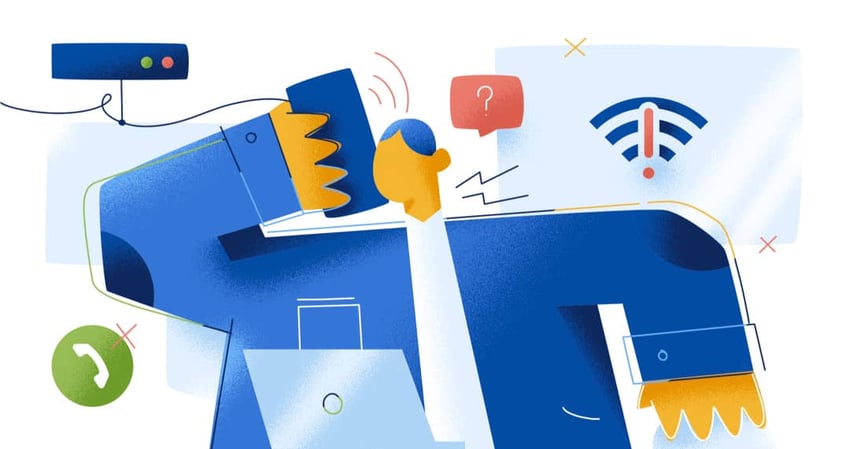Voice over Internet Protocol (VoIP) is a modern marvel in business communication, offering significant cost savings, scalability, and a wealth of features compared to traditional phone systems.
But to reap the full benefits of VoIP, it’s essential to grasp the concept of VoIP bandwidth and its impact on call quality. This comprehensive guide will break down everything you need to know about VoIP data usage to help you get the most out of your VoIP phone service.
A Primer on Bandwidth and Data Usage
You’re probably familiar with the idea of internet speed — the faster, the better, right? But when multiple devices connect, things can slow down. This is where bandwidth comes in.
Bandwidth refers to the amount of data transmitted over an internet connection within a specific time frame. It’s like a highway’s capacity — the wider it is, the more cars (data) can travel simultaneously. All data you send or receive, whether it’s emails, website visits, or phone calls, counts toward your bandwidth usage.
In the context of VoIP, VoIP bandwidth determines how many calls your network can handle without compromising call quality.
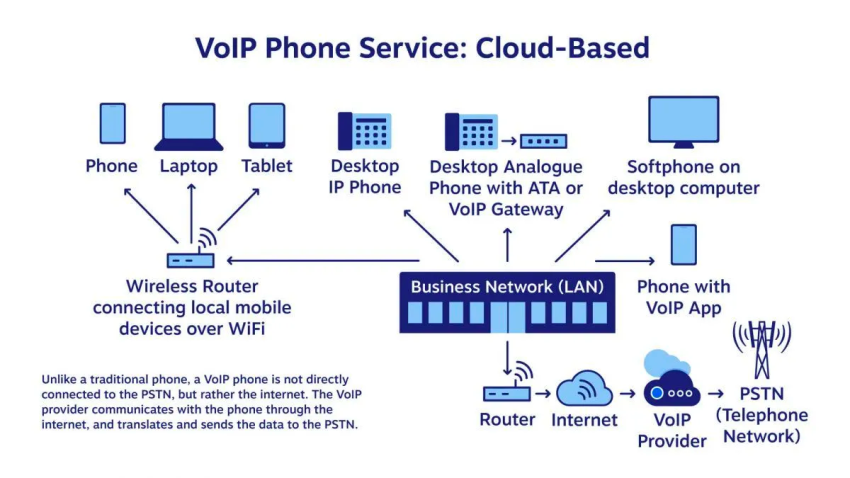
Understanding your bandwidth needs is crucial, especially if your internet plan has a data cap (a limit on the total amount of data you can use within a billing cycle).
VoIP calls, while efficient, still consume data, and exceeding your data cap could result in additional charges. It’s important to see how your business phone system’s usage fits into the bigger picture of your VoIP data consumption.
How Does VoIP Work?
VoIP transforms your voice into digital data packets, which are then sent over the internet. These packets travel through your network and modem and reach your VoIP provider, who connects your call to the Public Switched Telephone Network (PSTN) or another VoIP network.
The technology relies on Session Initiation Protocol (SIP) to establish a reliable and secure method of communication.
- An IP phone converts audio into data packets.
- These packets are transmitted over an IP network.
- Data flows through your modem to reach the VoIP provider on the internet.
- The VoIP service establishes calls over the PSTN or directly to other VoIP networks.

With hosted VoIP solutions, you can use softphone apps to make calls from various devices, as the provider handles the VoIP gateway.
Want to dive deeper? Read our in-depth explainers about how VoIP works and VoIP FAQs.
Understanding VoIP Bandwidth Requirements
What do you need to make smooth VoIP calls? Here are some factors affecting VoIP bandwidth needs.
1. High-quality internet connection
VoIP systems rely on a stable high-speed broadband connection. A minimum speed of 100 kbps per phone line is recommended for both upload and download. This ensures smooth transmission and reception of voice data, maintains voice quality, and prevents issues like lag or dropped calls.
Most modern broadband connections easily meet this specification for small offices or home use. Larger offices or call centers with multiple simultaneous calls may need a greater amount of bandwidth options for increased usage.

Run a speed test: Use a reliable online tool to measure both your download speeds and upload speeds. Compare the results to the requirements of your VoIP provider. If your speeds are low, consider upgrading your internet plan or contacting your provider for assistance.
2. Codec selection
You need high-quality codecs too. VoIP codecs compress and transmit voice data. Each VoIP system comes with different bandwidth needs:
| Codec | Bandwidth (one-way) | Call Quality |
|---|---|---|
| G.711 | 87.2 Kbps | High |
| G.729 | 31.2 Kbps | Good |
| G.723.1 | 20.8 Kbps | Fair |
| G.726 | 55.2 Kbps | Medium |
| OPUS | Variable (adaptive) | Excellent |
| SILK | Variable (adaptive) | Very Good |
These figures represent one-way communication. For typical two-way conversations, double these numbers to account for both incoming and outgoing voice data.
3. Data consumption rates
The more concurrent calls you need to make, the higher the bandwidth requirement. As your company grows and the number of calls increases, so does the impact on your bandwidth.
Similarly, if you frequently use video calls, allocate additional bandwidth to ensure smooth video and audio transmission. Factor in other online activities like web browsing, file downloads, and cloud applications when estimating your bandwidth needs.
Data consumption rates help estimate data needs based on typical call volume and duration to choose appropriate internet plans or manage VoIP data usage.
4. Mobile plan considerations
Most standard mobile data plans (3GB+) can support about 10 hours of VoIP calling using a high-quality codec like G.711.
The average U.S. consumer on a limited data plan uses about 1.6GB monthly for all activities, suggesting that adding voice calls shouldn’t cause issues for most users unless they’re heavy callers or have unusually low data limits.
5. Home office and remote work factors
Remote workers using VoIP systems from home should consider their internet plan’s data caps and speeds.
A heavy user spending 7 hours daily on VoIP calls, working 20 days a month, could use up to 86 GB of bandwidth. This might exceed some residential data caps, potentially leading to additional charges or reduced speeds.
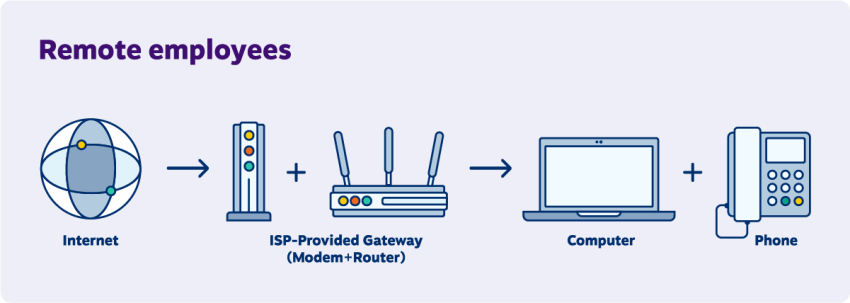
6. Business usage patterns
Most modern office broadband connections easily handle VoIP bandwidth needs, even with multiple simultaneous calls. For mobile business users, many business plans offer unlimited data, eliminating concerns about hitting data caps due to VoIP usage.
7. Wi-fi calling dynamics
Wi-Fi calling doesn’t count toward cellular data caps but depends on the Wi-Fi connection’s stability and speed. Ensure your Wi-Fi network meets the basic speed needs for VoIP (at least 100 kbps per line).
A stable connection prevents call drops or quality issues, especially in public Wi-Fi scenarios where connection quality can vary.
How Much Bandwidth Does VoIP Need?
VoIP typically requires 80-100 kbps of bandwidth per concurrent call, but this can fluctuate depending on the audio codec used, desired audio quality, and other network traffic. High-quality audio codecs or video calls demand additional bandwidth.
10 employees making simultaneous calls need at least 1-1.25 Mbps for clear audio.
Here’s a rough estimate of data usage per call, depending on the codec:
| Codec | 10-Minute Call | 1-Hour Call |
|---|---|---|
| G.711 | 102 MB | 613 MB |
| G.729 | 36 MB | 219 MB |
A 1 Mbps connection isn’t enough for 10 high-quality VoIP calls. You need to factor in other business activities like CRM usage, webinars, and general internet browsing.
- Business internet options: Major carriers offer gigabit speeds (1000 Mbps), suitable for small businesses. Larger offices may benefit from dedicated connections or fiber optic solutions.
- Network optimization: For large offices or call centers, consider separating VoIP traffic using a VLAN or dedicated network switch to avoid congestion and ensure call quality.
- Connection quality matters: Beyond speed, prioritize a stable connection with minimal packet loss and latency. High latency or packet loss can lead to audio delays, poor call quality, or dropped calls.
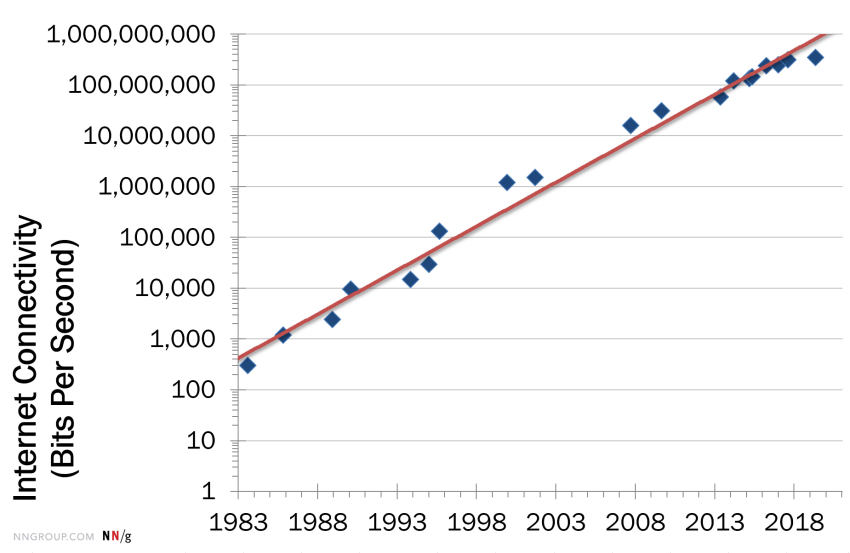
Use a VoIP Speed Test to assess your network’s readiness for VoIP. For precise bandwidth requirements tailored to your setup, consult your VoIP provider or a network specialist.
Always ensure sufficient bandwidth is available for all network activities, leaving room for fluctuations in usage.
Calculating Your VoIP Bandwidth
To ensure smooth voice-over IP calls and avoid unexpected data costs, calculate your bandwidth needs.
Here’s a simple VoIP bandwidth calculator to take a queue from:
The formula for calculating bandwidth per call:
While the exact formula can vary depending on factors like packet headers and overhead, a simplified version looks like this:
Bandwidth per call (kbps) = Codec Bitrate (kbps) + Overhead (kbps)This formula combines the codec’s bitrate (how much data it uses per second) with overhead (extra data for call management).
Examples of different codecs & scenarios:
| Codec | Bitrate (kbps) | Overhead (kbps) | Total Bandwidth (kbps) |
|---|---|---|---|
| G.711 | 87.2 | 11.72 | 98.92 |
| G.729 | 31.2 | 11.72 | 42.92 |
This is the bandwidth needed for one-way communication. For a two-way conversation, you’ll need to double the total bandwidth.
Scenario: If you’re using the G.729 codec and expect to have 5 simultaneous calls, your total bandwidth requirement would be:
5 calls * 42.92 kbps/call = 214.6 kbpsMany online tools and VoIP bandwidth calculators can simplify the bandwidth calculation process. These tools often allow you to input your codec, call volume, and other factors to get a more accurate estimate of your bandwidth needs.
Factors Affecting VoIP Bandwidth
VoIP bandwidth isn’t solely about having a fast internet connection. Several VoIP issues can influence the quality of your calls.

Let’s look at the key culprits and how to troubleshoot them:
Network congestion
Similar to rush hour traffic slowing down cars, network congestion can clog up your internet connection. During peak usage times, your network might experience congestion, leading to choppy audio and delays.
Troubleshooting: Try to schedule important VoIP calls during off-peak hours when network congestion is likely to be lower. If you’re using Wi-Fi for VoIP, be aware of potential interference from other devices or networks. Consider switching to a wired Ethernet connection for more stable call quality.
Jitter and packet loss
Jitter refers to variations in packet delay, while packet loss occurs when data packets fail to reach their destination. Both can degrade call quality.
Troubleshooting: Some routers or software allow you to limit bandwidth usage for specific applications. Consider restricting bandwidth-hungry activities like streaming or large downloads during important calls. Contact your internet service provider (ISP) to troubleshoot these issues.
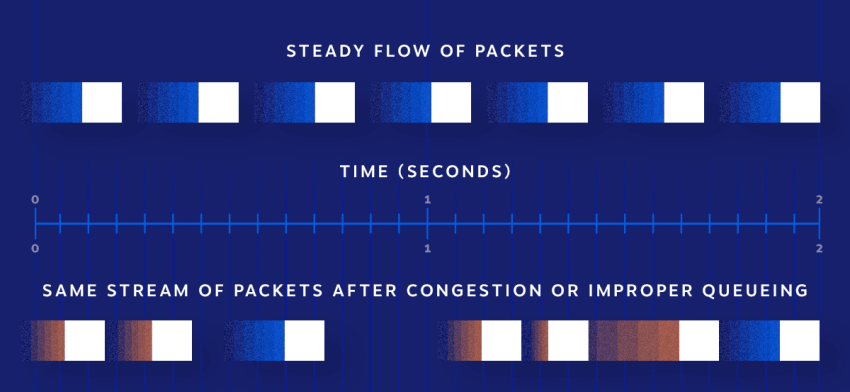
Hardware limitations
Your router, switches, and other network devices are crucial for VoIP quality. Older or underpowered equipment might struggle to handle the demands of multiple VoIP calls, especially if you’re also using the internet for other tasks.
- Firewalls: These security measures can sometimes mistakenly block VoIP traffic, thinking it’s a threat. You might need to configure your firewall to allow VoIP data through.
- NAT (Network Address Translation): NAT helps multiple devices share one public IP address. However, it can sometimes interfere with VoIP calls. Your VoIP provider or IT support can help you set up NAT traversal to avoid these issues.
Troubleshooting: Make sure your network devices are up-to-date and functioning properly. Restarting them can sometimes resolve connectivity issues. If your equipment is old or struggling to handle your VoIP needs, upgrading to newer, more powerful models might be necessary. Ensure your router, switches, and other network devices can handle the demands of your VoIP system.
If you’ve tried the above steps and are still experiencing problems, reach out to your VoIP provider’s technical support. They can help diagnose the issue and offer further assistance.
How To Optimize VoIP Bandwith Usage
VoIP troubleshooting helps keep common problems at bay, but to best use your VoIP phone system, you should keep a few bandwidth optimization tips handy:
Codec selection
Choose the right codec to improve bandwidth usage and call quality. The right codec determines how much data VoIP calls consume and affects overall call quality.
Select a flexible codec that adapts to varying bandwidth conditions, making it suitable for a range of network environments.
Your codec should also be versatile and offer excellent audio quality even at low bitrates, making it ideal for situations with limited bandwidth. It should adjust its compression level based on available network resources.
Nextiva, for example, uses the G.711 codec to compress and stream phone call data. A modern PSTN phone network also uses the G.711. It uses minimal, lossless compression to digitize analog voice signals at 64 kbps.
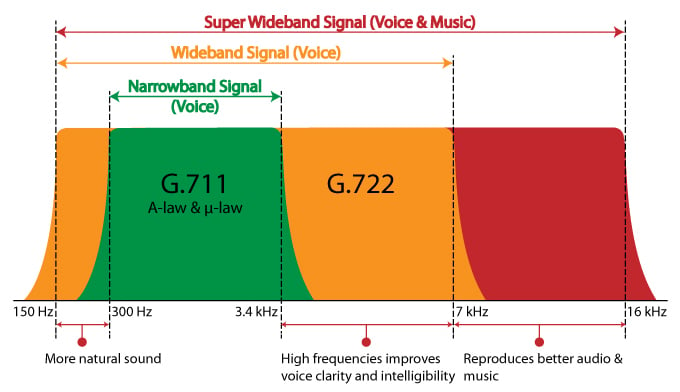
Advanced compression techniques
Beyond codecs, other compression methods can further reduce bandwidth consumption. Silence suppression, for example, removes periods of silence from the audio stream, saving valuable bandwidth during natural pauses in conversation.
Bandwidth monitoring
Use bandwidth monitoring software or hardware tools to monitor network traffic and identify potential bandwidth bottlenecks. These tools allow you to efficiently manage bandwidth allocation and prevent other applications from negatively impacting VoIP call quality.
Traffic management
Implement Quality of Service (QoS) settings on your router or network equipment to prioritize VoIP traffic. Your calls will receive the necessary bandwidth, even during periods of high network activity. QoS can significantly improve call quality and reliability.
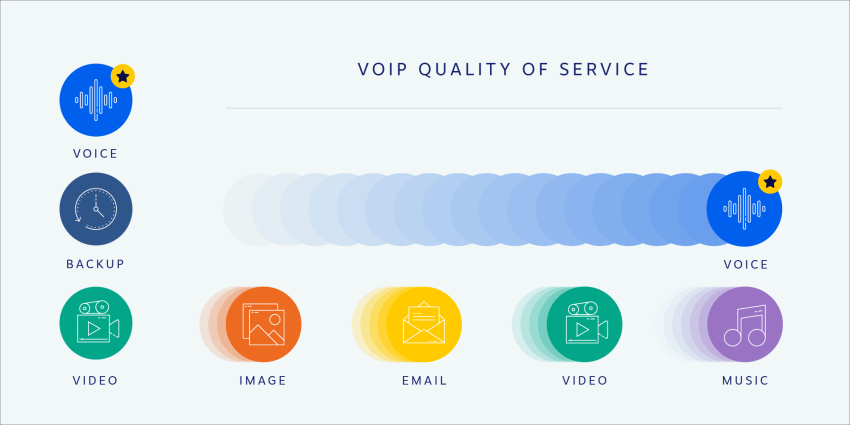
Choosing the Right Business VoIP Provider
No matter how many measures you take to save and optimize your VoIP bandwidth, without a good VoIP provider, most of your efforts will be in vain. Finding the right partner is an investment in your business’s future, one that can dramatically enhance communication, streamline operations, and improve your bottom line.
Nextiva’s VoIP phone service stands out in a competitive market, offering a comprehensive suite of functionality that caters to a wide range of business needs. Whether you’re a small business seeking essential calling features or a large call center demanding advanced scalability and flexibility, Nextiva has a solution tailored for you.
With Nextiva, you’re not just choosing a VoIP provider; you’re choosing a partner dedicated to empowering your business. We provide the tools and support you need to take control of your communication infrastructure, reduce costs, and unlock new levels of efficiency and productivity.
Your business phone system is more than just a tool; it’s a strategic asset, and Nextiva is here to help you harness its full potential.
Experience the reliability and clarity of Nextiva VoIP.
Get your questions answered and see how Nextiva offers the features you need.
VoIP Data Usage FAQs
Want to know more? Read some of the key FAQs.
VoIP relies on Internet Protocol (IP) to exchange digital data and does not work without an internet connection. You need a high-speed broadband connection rated for at least 100 kbps per phone line up and down, which is a breeze for most broadband connections. The larger your company gets, this can become a challenge.
Bandwidth refers to your network’s capacity to handle internet traffic. When it comes to VoIP, bandwidth matters because it measures how much data can be transferred over your internet connection at one time.
We recommend 100k of bandwidth per VoIP phone to achieve the best call and sound connectivity. Of course, remember to factor in how much bandwidth is being taken up by each device on your network such as computers, printers, and mobile devices that also use up bandwidth.
Want to see how much your internet connection can handle? Test your connection’s capacity with Nextiva’s speed test tool.
Unlike many landline plans, you typically don’t pay per minute for domestic calls over VoIP. Advances in internet technology allow for extremely low costs to provide reliable phone calls.
With Nextiva, you can get unlimited calling in the United States and Canada with every plan. Read more about what costs of VoIP and find the right plan for your business.
International calls are also significantly cheaper with VoIP. Overseas calls can be made for as little as a penny per minute. Be amazed by the international calling rates with VoIP.
For out-of-office calls, most data plans will be sufficient. For most consumers, mobile data plans will throttle the speed of the connection once they exceed a very high threshold of bandwidth.
A standard mobile plan these days offers more than 3GB of bandwidth, which is almost 10 hours of calling. On average, U.S. consumers on limited plans use just 1.6GB of data per month.
It’s worth noting that calls made over Wi-Fi don’t count toward your data cap on a cellular plan.
Business plans typically have unlimited data, which, of course, eliminates the issue with data caps.
For those who work from home on a residential broadband connection, we recommend reviewing past usage and understanding your limits with your ISP.
At Nextiva, we provision all VoIP phones for our customers before sending them. That means all you need to do is sign up, choose your phone, receive it, and plug it in to start calling. You can even use the free Nextiva App on your desktop (and smartphone) without buying a VoIP desk phone.
Making the switch to a large office can be a little more involved. In that case, you should follow our step-by-step guide on setting up VoIP. Regardless, you get all the guidance, recommendations, and support you need with Nextiva at no extra charge.
You can also keep your local or toll-free phone number when you switch to VoIP through a process known as porting.

















 VoIP
VoIP 




